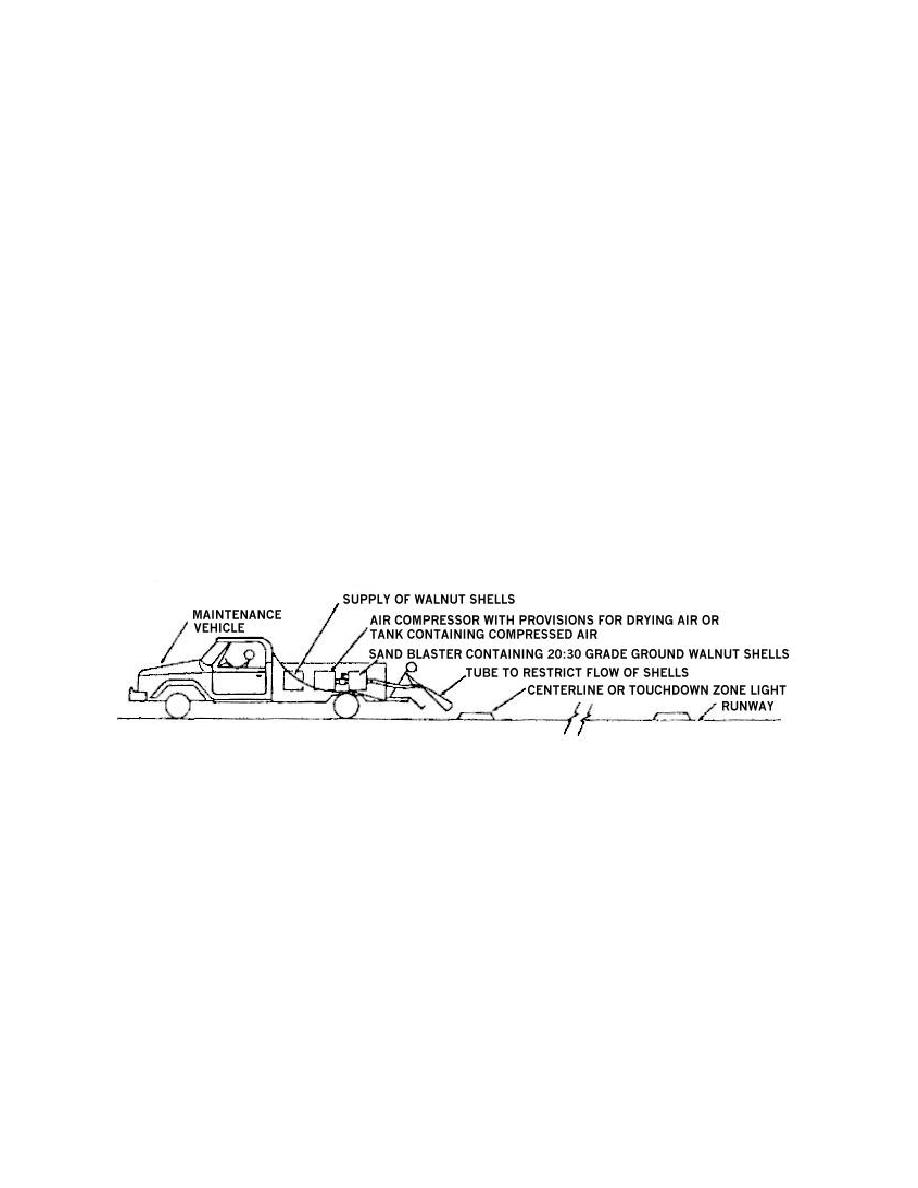

Custom Search
|
|

|
||
 MIL-HDBK-1023/4
(1) Manual. Commercially available cleaning detergents and pads can be used for
removal of deposits from the lighting fixture lens unless prohibited by the manufacturer.
Abrasive materials such as sandpaper or emery cloth should not be used because they will
scratch the glass. Solvents are available that will clean the lens, but the solvent must be left on
for a period of time to dissolve the deposit. The solvent used must be compatible with the lens
sealing material. While manual techniques are well suited for bench cleaning of lights, they are
very time consuming for cleaning lights when installed in pavement.
(2) Ground Shells. Unless not recommended by the light fixture manual the
cleaning can be done by using 20/30 grade, clean, ground walnut or pecan shells and clean, dry
compressed air or nitrogen (nozzle pressure 85 psi). Figure 14 shows a typical example of how
to clean the lighting fixture with shells.
(a) An average time of 10 seconds is required for cleaning the external surface
of the lens.
(b) The average usage of ground walnut shells is 0.6 pound ( 0.25 kg) per
fixture.
(c) The cleaning system shown is not available as an assembled unit; however,
a commercially available air compressor with controls and gauges, a sandblaster unit, and
abrasive resistant hoses may be used.
(d) After removal of the deposit from the lens, the fixture's light channel should
be cleaned of shells with a blast of air, and the remaining dust wiped off with a clean cloth.
Figure 14
Cleaning Centerline and Touchdown Zone Lights
(3) Abrasive Brush. An abrasive brush may be used to clean rubber deposits by
mounting it on a rotary hand tool powered by air pressure or electricity. The average cleaning
time is 30 second per lens. Care must be taken not to remove the lens-sealing material in the
cleaning process; this can be avoided with the use of a shield.
c) Light Aiming. The in pavement lights are aimed as part of the installation
procedure. For lights installed on the tops of transformer housings, the aiming is fixed and
nonadjustable. For lights installed on glue-in bases, the aiming may come out of alignment due
to twisting of the light bases. The runway centerline lights should be aligned to within 2 of a
line parallel to the runway centerline. When reinstalling the base, use an adhesive compatible
with the type of pavement. P-606 sealer has compounds that are compatible with both concrete
and asphalt pavements; be sure to choose the correct mixture. The aiming of in pavement lights
may readily be checked by turning the lights on during foggy weather. The fog makes the light
beam visible, and it is easy to tell if a light is properly oriented in such conditions. For
57
|
 |
|
 |
||